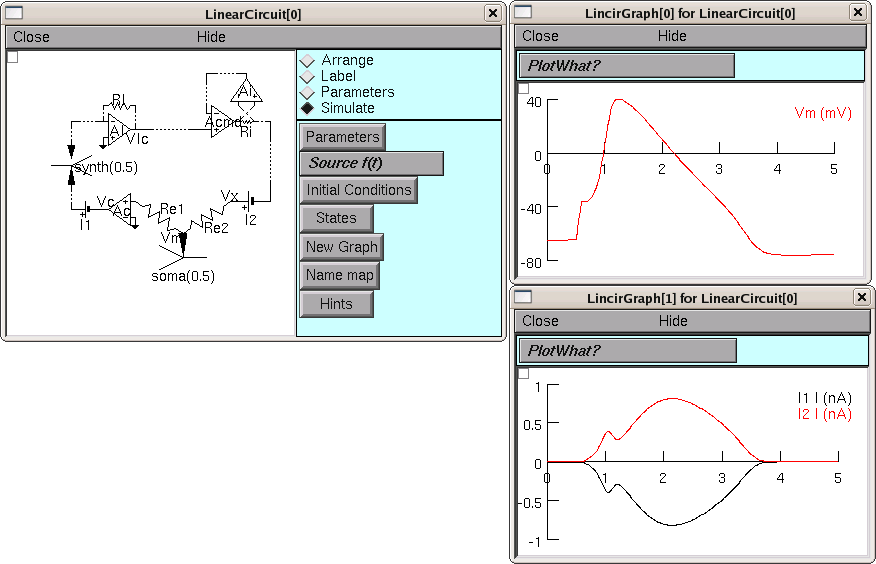
Consider a dynamic clamp experiment on a short piece of mutant squid axon (surface area 100 square microns). This mutant cell expresses HH leak and voltage-gated potassium channels, but cannot generate a spike because it does not express voltage-gated sodium channels. The object of the experiment is to reconstitute the membrane action potential by using a dynamic clamp to supply the missing sodium current.
This is a model of just such an experiment, constructed with NEURON's Linear Circuit Builder. The graphs on the right show the reconstituted spike and the time course of the synthesized sodium current (I1 I) and the current that is fed back into the squid axon by the current clamp (I2 I).

Explanation of circuit
The piece of squid axon is indicated by the y-shaped stick figure (soma(0.5)) in the Linear Circuit Builder's schematic diagram. The cell's membrane potential is montored by an electrode and amplifier (Re1 and Ac). This membrane potential is fed to a model of the HH sodium current. The model of the HH sodium current is implemented as a model cell (synth(0.5)--so synth is a model of a model!) with 100 square microns surface area and extremely small specific membrane capacitance (1 picofarad/cm2). The synthesized sodium current is captured by the "virtual ground amplifier" AI, which outputs a proportional voltage. That voltage serves as the "command" for an active current clamp (the Acmd, Ai, Ri subcircuit), which feeds a current back into the squid axon that is identical to the synthesized sodium current.
Notes:
1. Charge balance dictates that the current captured by
VI is identical to the current delivered by Vc.
2. The "voltage
sources" labeled I1 and I2 exist only as a convenience (a hack)
for measuring the currents that pass through them. Their voltages
have magnitude 0, and they do not affect the operation of the
circuit.
Page and graphics copyright © 1999-2006 N.T. Carnevale and M.L. Hines, All Rights Reserved.